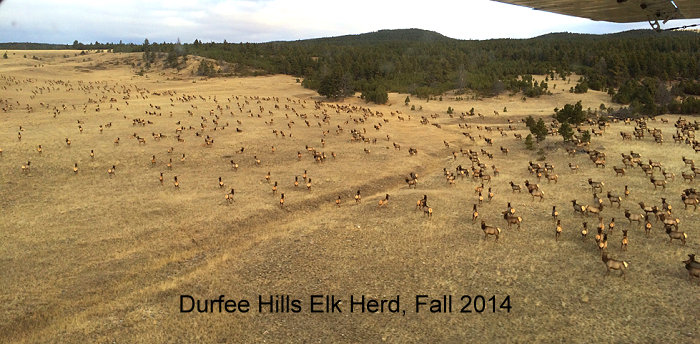The Montana Wildlife Federation has for eight decades stood up for abundant wildlife, healthy habitat and public hunting opportunity. As part of that, MWF has been a leader in protecting our public lands, places that offer world-class wildlife habitat and equal opportunity for all Montanans to hunt.
Recently MWF debated the proposal by the N-Bar Ranch in Fergus County, which is owned by the Wilks Brothers, to trade roughly 4,868 acres of Bureau of Land Management public lands, including 2,785 acres of the Durfee Hills, for 5,100 acres of Wilks’ land that includes the former 2,243-acre Anchor Ranch in Blaine County. MWF voted to oppose the land trade.
It’s important to note that MWF is not opposed to land trades and public land sales that can benefit wildlife, habitat and public hunting. Montana is rife with examples of major land deals that have had public benefit. For example, land trades in the upper Gallatin River drainage blocked up large areas of public lands that are prime wildlife habitat. Many other carefully planned land trades have helped block up public lands and improve public access.
But in every case, it must be determined whether a land trade would benefit the public. And in this case, clearly it would not. MWF looked at the proposal on a value-for-value basis that considered several criteria, including the quality of the habitat; presence of huntable populations of wildlife including elk, mule deer and sage grouse; and public access and hunting opportunity.
The Anchor Ranch, a small isolated parcel of the much larger N-Bar Ranch, didn’t come close in terms of wildlife habitat to the Durfee Hills. The Anchor Ranch is essentially a sagebrush plain with little big game security habitat and relatively few big game animals. In contrast, the Durfee Hills contain superb wildlife habitat.
It’s true that the Durfee Hills are accessible primarily by air at this time. But in recent years, more and more hunters are accessing the area via airplane for a relatively affordable fee. The area has had roughly 200 elk hunter days per year, and high success rates, according to data from Montana Fish, Wildlife and Parks. The hunting district that encompasses the Durfee Hills has an elk population of more than 5,200. Roughly 2,000 of those elk inhabit the Durfee Hills at some time of the year. In addition, the Durfee Hills are the only remaining federal lands available for public big game hunting in Herd Unit 530, and are the core habitat for an elk herd that has provided 1,120 to 2,563 public elk hunter-use days over a decade.
In contrast, the Anchor Ranch, in Herd Unit 680, has walk-in access off of nearby dirt roads. The elk herd is small enough to warrant hunting by special permit only. It shows in elk hunter-use days, which have ranged from 100 to 533 over a decade.
One of the arguments to make the land trade was to open the Bullwhacker Road, which leads to the Upper Missouri River Breaks National Monument south of the Anchor Ranch and the hunting opportunities it offers. However, that area is already accessible by boat on the river, as well as farther upstream via some roads.
A final reason to retain the Durfee Hills and the other parcels of nearby BLM public lands is to continue the public use and hunting access to a pair of state land sections that adjoin the federal lands there.
It is not in the interest of the public to trade away some of the best wildlife habitat in Montana. Land trades with private landowners have offered some solid benefits to the public over the years, but this would one would not. The BLM should reject this offer and keep the Durfee Hills in public ownership for the public to enjoy.
Bill Geer is a retired wildlife biologist and a board member of the Montana Wildlife Federation. Contact him at
This column appears in the Missoulian and in the Billings Gazette


